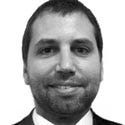What role will white space play in the mobile broadband explosion?
December 17, 2013

The growth in mobile broadband usage is so rapid that it cannot be accommodated by new technologies alone -- access to new sources of spectrum is also essential.
It is therefore unsurprising that unused spectrum in certain areas -- so-called white space -- is generating excitement in the industry.
However, this new approach raises key technical and commercial challenges and even risks harming existing mobile services.
Research from Ericsson AB shows that global mobile data traffic grew 80% between the second quarter of 2012 and the third quarter of 2013, which means that the average mobile operator will need about 1600-1800MHz of spectrum by 2020, compared with the 300-500MHz they have today.
Needless to say, this is a substantial amount of new spectrum and represents a critical challenge for the telecom industry. In this light, the promise of unused bands undoubtedly holds appeal. Regulators are inevitably eyeing up all opportunities and white space is seen by many as a prime new resource to mine.
White space is used to define the parts of spectrum that are not used at a particular time and geographic location. Traditionally, the focus has been on TV white space, which consists of unused spectrum in the television broadcasting bands (for example, 470–790MHz in Europe and 470–698MHz in the US).
These bands contain portions of unused spectrum because of the necessary geographical separation between television stations using the same frequency channel and due to unused spectrum by regional television stations.
In principle, these white spaces can be used to provide vital new capacity for broadband services. However, there are a number of issues that could limit the size of the market, the quality and cost of services, as well as potentially negatively impact existing licensed mobile broadband services.
A key reason behind the success of mobile services, and indeed unlicensed WiFi, has been the use of harmonized spectrum around the world. This enables significant economies of scale, resulting in lower costs for consumers, as device manufacturers can mass-produce devices that function in multiple countries using a single band.
Spectrum and technology harmonization remains a major objective of the International Telecommunication Union (ITU), national regulators, and the whole of the mobile industry. The use of white space is problematic as it can use any number of different frequency channels and all sorts of different radio technologies, resulting in high equipment prices and poor end user device choice.
Crucially, it is often unavailable in the locations where it is needed most. In cities and suburbs, where the capacity challenge is greatest, there is very little TV white space available. A number of industry players advocate white space as an ideal technology to connect users in rural areas, particularly in developing markets, but the sparse population and relatively high price of devices create a questionable business case.
Where white space is available, interference with TV broadcasts and services in adjacent bands requires careful management. As television broadcasts would be prioritized over white space services, users could only expect a best-effort service.
Clearly white space is not a silver bullet for the capacity challenge. In contrast, the worldwide licensed spectrum model for mobile use has established widespread availability of low-cost, high-speed and reliable mobile broadband services and devices.
The licensed model also brings other crucial economic benefits by guaranteeing quality of service, safeguarding against interference, and providing a higher degree of market certainty to create incentives for investment. For example, allocating the licensed Digital Dividend spectrum band to mobile broadband in Sub-Saharan Africa would generate a GDP increase for the region of US$49 billion from 2015 to 2020, while contributing a further $15 billion of tax revenues over the period (according to the findings of a GSM Association report, Sub-Saharan Africa Mobile Economy 2013).
Against this backdrop, a key concern is the destabilizing effect of the principle of white space on the established licensed approach and the economics of mobile communications. What operator would spend large sums of money on spectrum when others could get it for free? This doesn’t just create an unfair advantage, it will limit investment in new mobile technologies and services, as they would have a more uncertain future, and drive up the price of services to mitigate the increased risk to licensed networks.
It is understandable that white space is attracting attention, but this should not distract policy makers from their first priority -- to provide access to spectrum with the appropriate regulatory framework to optimize the use of this scarce resource and provide certainty for investment. Given the staggering growth of mobile broadband data, it is essential that more licensed spectrum is made available in order to avoid a serious decline in service levels.
This is why policy makers are prioritizing opening up sub-1GHz and Digital Dividend spectrum for licensed use so that popular mobile broadband services can continue to support the ever-increasing demand for data and reach even more people.
— Wladimir Bocquet, Senior Director of Spectrum Policy, GSMA
About the Author(s)
You May Also Like











